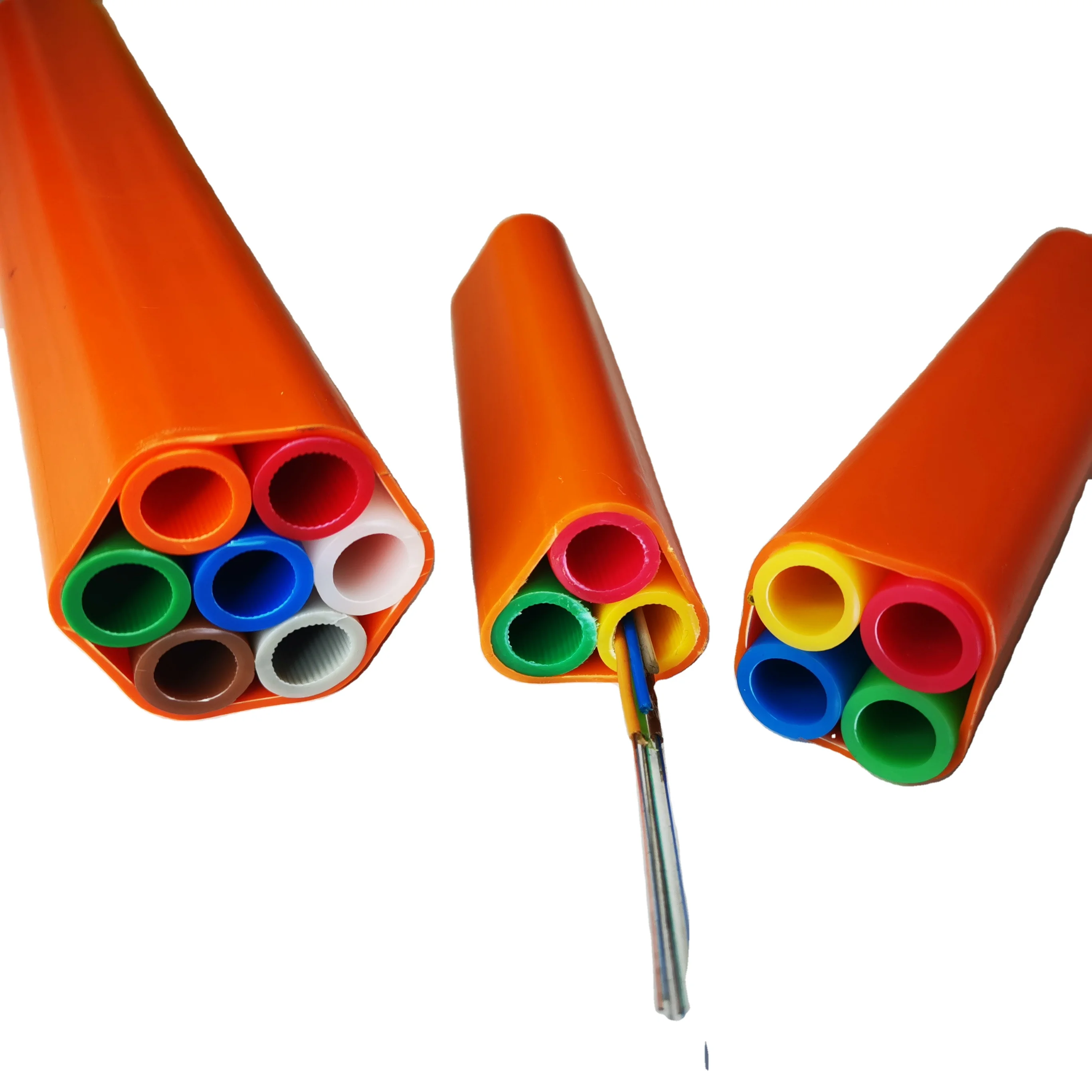عالم الاتصالات يشهد تطورات مستمرة، خاصة في مجال التنفيذ من خلال نشر البنية التحتية والربط النهائي باستخدام تقنيات الألياف الضوئية التي تعتبر ضرورية لتحسين الكفاءة والاستدامة. ومن أبرز هذه التقنيات تأتي أنابيب الميكرو دكت المصنوعة من البولي إيثيلين عالي الكثافة (HDPE)، وهي خطوة كبيرة في تطور التكنولوجيا وتحولها إلى حلول ثورية تغيّر طريقة تعاملنا مع بناء وتوسيع شبكات الاتصالات. وفي ظل زيادة الحاجة إلى نطاق ترددي أكبر، توفر هذه الأنابيب الرقيقة مساحة كافية لإيواء الكابلات الضوئية الحيوية. سنتناول في هذا المقال المفيد بعض الجوانب المثيرة وغير الفعالة التي يمكن أن تقدمها أنابيب HDPE والتي تعود بالنفع على طريقة تقدمنا، بالإضافة إلى سبب وجوب التفكير في بدائل مثل الكابلات المستعملة وأخيرًا كيف تلعب دورًا حيويًا في حلول الشبكات الضوئية الصديقة للبيئة.
مع المزيد من الصلة مع ظهور إنترنت الأشياء (IoT)، هناك الآن طلب كبير على نقل البيانات بسرعة - ومع كل هذا في الاعتبار، فقد يكون منظر الاتصالات كما نعرفه قد... يتغير؟ مصمم ليتطور مع البنية التحتية. تطورنا يعتمد على نفس أنظمة hdpe microduct، مما يتيح مستوى من القابلية للتوسع والمرونة لم يتم رؤيته من قبل بواسطة الأنظمة التقليدية للقنوات. لذلك فإن الميكرودوكتس ممتازة لوضعها في الحرم الجامعي للمدن المزدحمة بالفعل بينما توفر طريقة سهلة لإدخال أو استبدال الكابلات - خاصة عند النظر إلى المناظر التكنولوجية المتغيرة باستمرار. من خلال تنفيذ hdpe microducts، يمكن لمقدمي الشبكات ضمان استعداد بنى تحتيتهم لما سيُطرح في السنوات القادمة - من 5G إلى تقنيات المدن الذكية وما بeyond.

الابتكار في أنابيب المايكرو بدقة عالية (HDPE) هو مجموعة متعددة الأوجه من الحلول التي تقدم إجابات على مخاوف المواصفات المذكورة، والمناطق خارج تلك القضايا الفورية المتعلقة بالتركيب التي لا يفكر فيها المستثمرون لتلبية أداء شبكاتهم عبر []. وتشمل هذه الأنابيب المسبق توصيلها التي تقلل من وقت التركيب وتعزز الإغلاق، وأنظمة الأنابيب متعددة الطبقات المصممة للعمل في بيئات حادة. يمكن تركيب أنظمة أنابيب المايكرو القابلة للدفع في وقت قصير ولا تحتاج إلى معدات نفخ باهظة الثمن، مما يجعل عملية مد الكابلات سهلة نسبيًا. توفر Pronto Networks منصة ذكية ومفتوحة لشبكات الاتصال اللاسلكي العريض التي يمكن للمشغلين电信 استخدامها لتوفير مجموعة من خدمات الصوت والبيانات مع الاستفادة من البنية التحتية الموجودة لديهم.

بينما قد تختار شركتان للاتصالات في أمريكا الجنوبية إما دفن الكابلات الضوئية مباشرةً بطريقة تقليدية أو باستخدام طريقة أخرى، قد يستخدم نفس المزودين أنابيب ميكرو HDPE مدفونة في أماكن أخرى. هذه العرضة تشرح لماذا توفر هذه الأنابيب سلامة إشارة ممتازة وتضمن أيضًا عدم تسرب أي اضطراب كهربائي إلى المضخم ليؤثر على قياس RF الخاص بك. إدخال الكابلات: يجب أن يسمح نظام إدارة الكابلات ذي الاحتكاك المنخفض بإدخال أو سحب الكابلات بسهولة وسرعة أكبر من الأنابيب المعدنية التي قد تكون خطيرة على الكابلات الحساسة بسبب الحواف الخشنة. بسُمك الطوب تقريبًا، يصل قطر كل منها لأكثر من أربع بوصات ويزن عدة أطنان. إذا لم يكن كذلك، فإن أحجام الكابلات تتراوح بين مئات الألياف إلى آلافها لكل خيط، مما يستمر لتجاوز الملايين العامة من عدد الألياف (يمكن ملء مجاري بأكملها بقطر 12 بوصة بالكابلات الشريطية وهي لا تزال صغيرة بما يكفي لإعادة التجميع البصري) بكثافة أعلى بكثير عبر حقوق الاستخدام الخاصة بها سواء كانت تحت الأرض أو فوقها دون الإضرار بالبنية التحتية. مزيج من هذه الميزات هو السبب في كونها الأفضل والأكثر اتساقًا في التسويق والإعلان عن كابلات التلفزيون وكذلك تعتبر الأنابيب الميكرو HDPE خيارًا رائعًا لإدارة الأسلاك.

تُعتبر مجاري الـ HDPE الدقيقة جزءًا لا يتجزأ من عملية السلطات المحلية في ترقية بنية تحتية للاتصالات لكي تتمكن من مواكبة المتطلبات الناتجة عن المجتمع الرقمي المتزايد. يمكن لهذه المجاري أن تتضمن ربط الشبكات الموجودة دون الحاجة إلى الحفر والقيام بتثبيت خطوط ألياف ضوئية جديدة، وهو ما يمثل انقطاعاً مكلفاً بالنسبة للمشغلين. هذه القدرة تكون ذات قيمة كبيرة عند نقل الأنظمة القديمة لتوفير الإنترنت عالي السرعة وشبكات الاتصال الحديثة. وأخيراً وليس آخراً، إذا تمكنت من حماية شبكات المجاري الدقيقة للأجيال القادمة، ينبغي أن توفر ذلك حماية لاستثمارات البنية التحتية. فهي تمكن من تنفيذ انتشار سريع وبتكلفة منخفضة في المناطق المتقدمة والنامية لتساعد على جسر الهوة الرقمية، زيادة الاتصال وتعزيز النمو الاقتصادي.
نقدم خدمات ما قبل البيع، أثناء البيع وبعد البيع. فريقنا الفني يقدم استشارات تقنية، تصميم الحلول وإرشادات التركيب. وبالاختيار، فإن ميكرودوكتاتنا hdpe تضمن استجابة سريعة وحلول فورية لمتطلباتك.
نختص في أنظمة القنوات الدقيقة ذات الضغط العالي (HDPE). نواصل تعزيز استثماراتنا في البحث والتطوير ونقيم علاقات تعاون وثيقة مع معاهد الدراسات السريرية والجامعات. نستمر بشكل ثابت في إنشاء منتجات وتقنيات جديدة لتلبية احتياجات عملائنا المتغيرة.
لدينا أكثر من 20 عامًا من الخبرة في العمل مع قنوات الاتصال. يحتوي مصنعنا، الذي يمتد على مساحة 5,000 متر مربع، على معدات تصنيع متقدمة وأنابيب دقيقة من نوع HDPE. لضمان استقرار المنتج وموثوقيته، نلتزم بشدة بالمعايير الدولية.
تُصنع القنوات التي نستخدمها لربط معداتنا من مواد طبيعية عالية الجودة لأنابيب HDPE. يتم تصنيع هذه القنوات من مواد أولية عالية الجودة باستخدام حرفية ممتازة. يمكنك توقع مجموعة متنوعة من المنتجات بمواصفات مختلفة، والتي يمكن تخصيصها وفقًا لاحتياجاتك.


حقوق النشر © شركة قيتيان للاتصالات هاينان المحدودة. جميع الحقوق محفوظة - سياسة الخصوصية